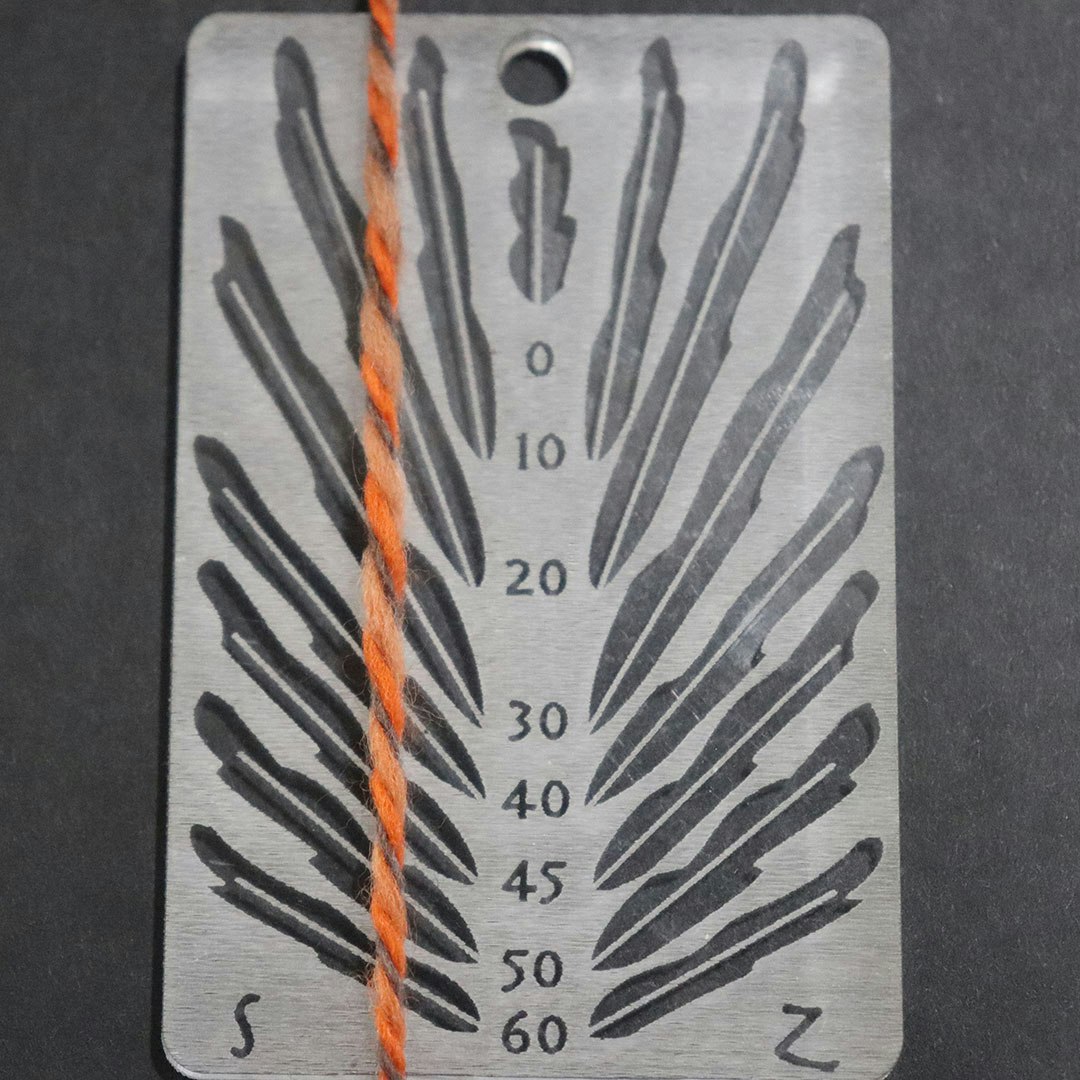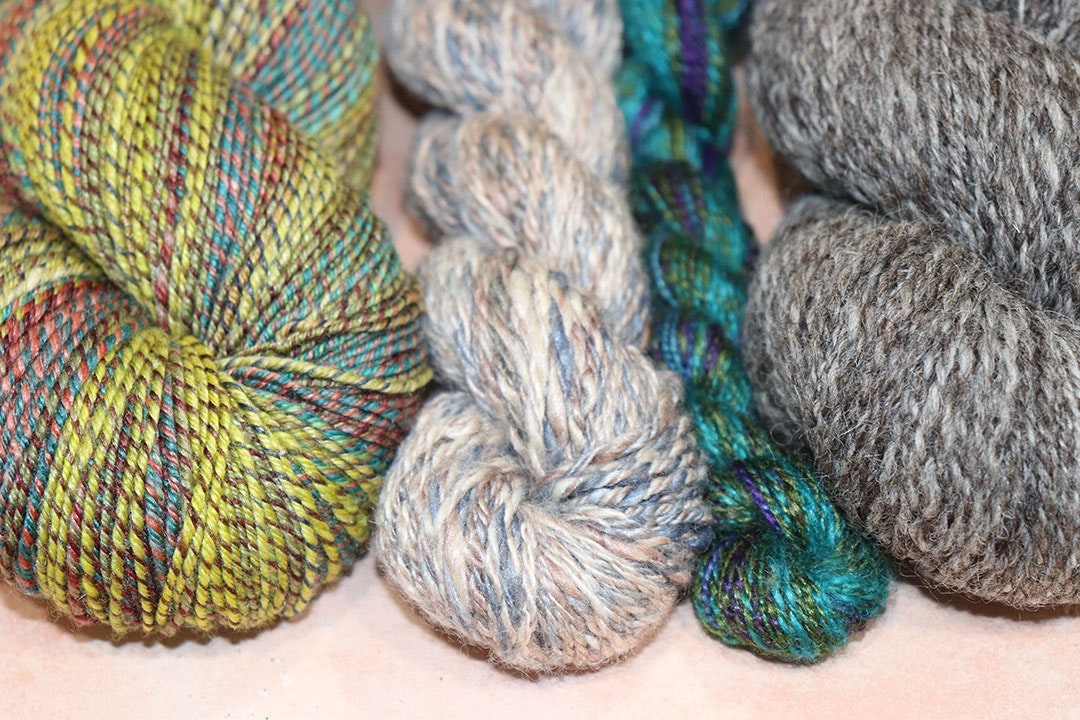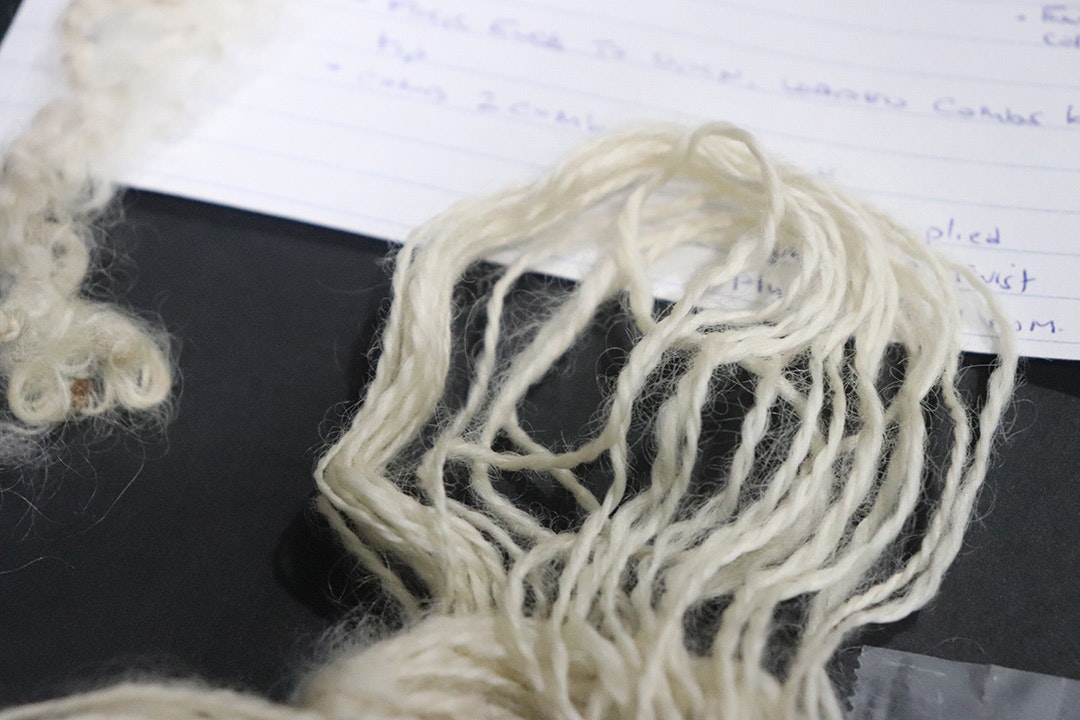If you’ve been spinning for any amount of time, you know that you can spin a range of yarns, from ones that fall apart to ones that seem like wire. (I have been guilty of spinning both.) Twist is the glue that holds our fibers together, but you can add too much or not enough to your handspun for its intended end use. You don’t have to be a super-technical spinner to measure angle of twist. There is a simple tool that will help you maintain consistent twist in your handspun—the twist-angle tool or gauge.
Twist Tool Basics
While some spinners use an ordinary protractor to measure their yarn’s angle of twist, the handy twist-angle tool makes it super-easy to measure the degree of twist in your singles or plied yarn. Twist-angle tools come in a variety of materials, shapes, and sizes. You can also find them paired with a spinner’s diameter control card.
Here’s how to measure your twist angle:
- First, note whether your yarn was spun or plied S or Z so that you’ll be sure to use the correct side of your gauge.
- Next, place your handspun on your twist-angle tool and hold it straight to see which degree angle the yarn most closely matches (most tools have degrees printed right on the tool). Make a note of the angle.
- Periodically, check your yarn against the tool as you spin.

Place your handspun straight across the tool and match the angle of the twist.
That sounds simple enough, but why would you want to do that? What can you learn from measuring your twist angle?
Maintaining Yarn Consistency
As spinners, we strive for a yarn suited for our intended project. The information learned from a twist-angle tool helps us to achieve more consistent yarns. What this means is that we can duplicate yarns, or resume where we left off when we walk away from our wheel for a while, and achieve the same level of twist. I personally enjoy high-twist yarns for two reasons: strength and aesthetics. Knowing the angle of twist helps me to create a consistently high-twist yarn.

Using a twist-angle tool can help you achieve more consistent yarns, and the tool works well on a varity of yarns.
Matching an Inspirational Yarn
Have you ever fallen in love with a commercially spun yarn? Use it for inspiration and duplicate it! I tend to spin thin by default, but I love the big, bulky yarns I see available in shops. With the millspun yarn as a guide, I can use the twist-angle tool to determine the degree of twist and spin my own, adding some fluffy, bulky yarns to my stash of handspun.
A Teaching Tool
There is so much we can learn about handspinning, and we can use the twist-angle tool to help us learn more about our own handspun. Take long wools for example. Before I understood twist and how to use it, I spun every fiber with the same variables: whorl, treadle speed, and drafting method. When I acquired a sample of Wensleydale, I made the most perfect wire ever! I have since learned that fibers spun with different levels of twist can really affect the end result and wearability of our yarn. Armed with more spinning knowledge, I spun a sample of Teeswater with low twist and created my intended yarn instead of wire—success!

Emonieiesha spun this undyed Teeswater and was able to achieve a sofy, airy yarn with the aid of her twist-angle tool.
The twist-angle tool is another great addition to your spinner’s toolbox. Go forth and spin with control!
Emonieiesha Hopkins is a Chicago, Illinois, fiber evangelist. She loves to gather with her wool and good fiber friends, anytime and any place. Learn more at hopkinsfiberstudio.com.

